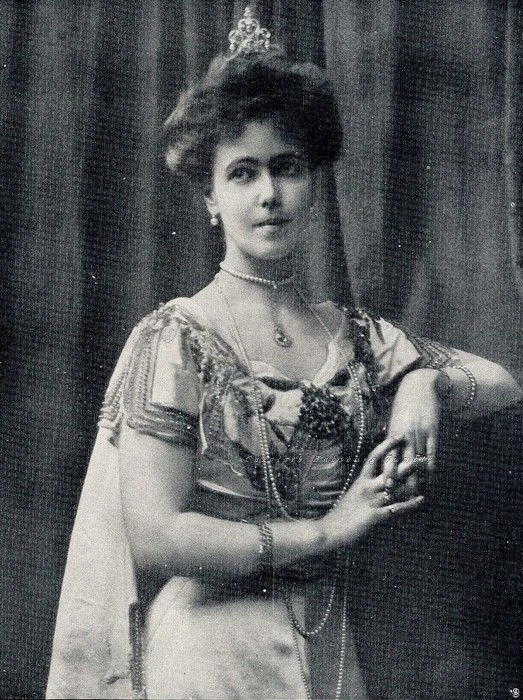Forty years have passed since the untimely death of Princess Diana, a life cut short in a tragic car accident in Paris on August 31, 1997. Her passing sent shockwaves around the world, leaving behind a legacy that continues to captivate and inspire people to this day. As we reflect on her remarkable life and enduring impact, it is essential to revisit the events that led to her untimely demise and the lasting influence she has had on the world.
Princess Diana's life was marked by her tireless charity work, her compassion for those in need, and her unwavering dedication to her family. Her humanitarian efforts, particularly in the areas of AIDS research and landmine removal, have been widely recognized and emulated. As we commemorate the 40th anniversary of her passing, it is crucial to remember the profound impact she had on the lives of millions and the enduring legacy she left behind.
what were the key achievements of Princess Beatrice of Saxe-Coburg and Gotha

- Duchess of Galliera: She married Infante Alfonso, Duke of Galliera, and became the Duchess of Galliera.
- Spanish Royal Family: She married into the Spanish royal family, becoming a member of the House of Orleans-Galliera.
- Order of Queen Maria Luisa: She was awarded the Dame of the Order of Queen Maria Luisa by Spain in 1912.
- Dame Grand Cross of Justice: She was also awarded the Dame Grand Cross of Justice of the Sacred Military Constantinian Order of Saint George by the Two Sicilies.
- Last Surviving Child: At the time of her death, she was the last surviving child of Prince Alfred and Grand Duchess Maria Alexandrovna.
what were Princess Beatrice's contributions to the Spanish royal family

- Marriage and Family: She married Infante Alfonso, Duke of Galliera, and had three sons, Alvaro, Alonso, and Ataúlfo, who were educated at Winchester College in England.
- Spanish Royal Family Ties: Her marriage into the Spanish royal family strengthened the ties between the British and Spanish royal families, with her sons becoming part of the Spanish royal lineage.
- Order of Queen Maria Luisa: She was awarded the Dame of the Order of Queen Maria Luisa by Spain in 1912, recognizing her contributions to the royal family.
- Legacy: Her family's connections to the Spanish royal family continued through her sons, with her great-grandchildren being part of the Spanish royal lineage.
how did Princess Beatrice's role in the Spanish royal family evolve over time
- Marriage and Early Years: Princess Beatrice married Infante Alfonso, Duke of Galliera, a first cousin of Alfonso XIII of Spain, in 1909. The couple had three sons, Alvaro, Alonso, and Ataúlfo, who were educated at Winchester College in England.
- Spanish Royal Family Ties: Her marriage into the Spanish royal family strengthened ties between the British and Spanish royal families. Her sons became part of the Spanish royal lineage, and her family maintained connections to the Spanish royal family through her sons' descendants.
- Exile and Return: The family faced difficulties during the Spanish Civil War and the subsequent exile of King Alfonso XIII. Beatrice and her family were initially expelled from Spain in 1916 but were allowed to return in 1924. They established their home at an estate in Sanlúcar de Barrameda.
- Later Life and Legacy: Beatrice died in 1966, leaving behind a legacy of her family's connections to the Spanish royal family. Her sons' descendants continue to be part of the Spanish royal lineage, and her name remains a reminder of the historical ties between the British and Spanish royal families.
 |
Princess Alice, Countess of Athlone, in 1963. Photograph © Yevonde Portrait Archive / Mary Evans Picture Library. |
 |
| The Countess of Athlone curtsies to the Queen; Princess Margaret stands behind them. Photograph © Rex Photos. |
 |
The Duke and Duchess of Albany with their daughter Princess Alice. Photograph © National Portrait Gallery, London. |
 |
| Prince Alexander of Teck and Princess Alice of Albany on their wedding day. Photograph © Royal Collection Trust. |
 |
| Princess Alice, Countess of Athlone, 1941. |
 |
| Princess Anne and Princess Alice, Countess of Athlone, in London, 1969. |
As we reflect on the life and legacy of Princess Diana, it is essential to acknowledge the profound impact she had on the world. Her tireless charity work, compassion for those in need, and unwavering dedication to her family have left an indelible mark on the hearts of millions. The 40 years since her passing have seen significant changes in the way the media approaches the royal family, with a greater emphasis on respecting their privacy and a more nuanced understanding of the complexities of celebrity culture. Princess Diana's enduring legacy continues to inspire and motivate people to make a positive difference in the world.
As we move forward, it is crucial to remember the lessons Princess Diana taught us about the power of compassion, empathy, and kindness. Her life serves as a reminder that even the most influential among us can use our platforms to make a meaningful difference. The enduring legacy of Princess Diana will continue to inspire generations to come, and her memory will remain a beacon of hope and inspiration for those seeking to make a positive impact. As we look to the future, let us strive to emulate her example and work towards creating a world where everyone has the opportunity to thrive and live with dignity.


No comments:
Post a Comment